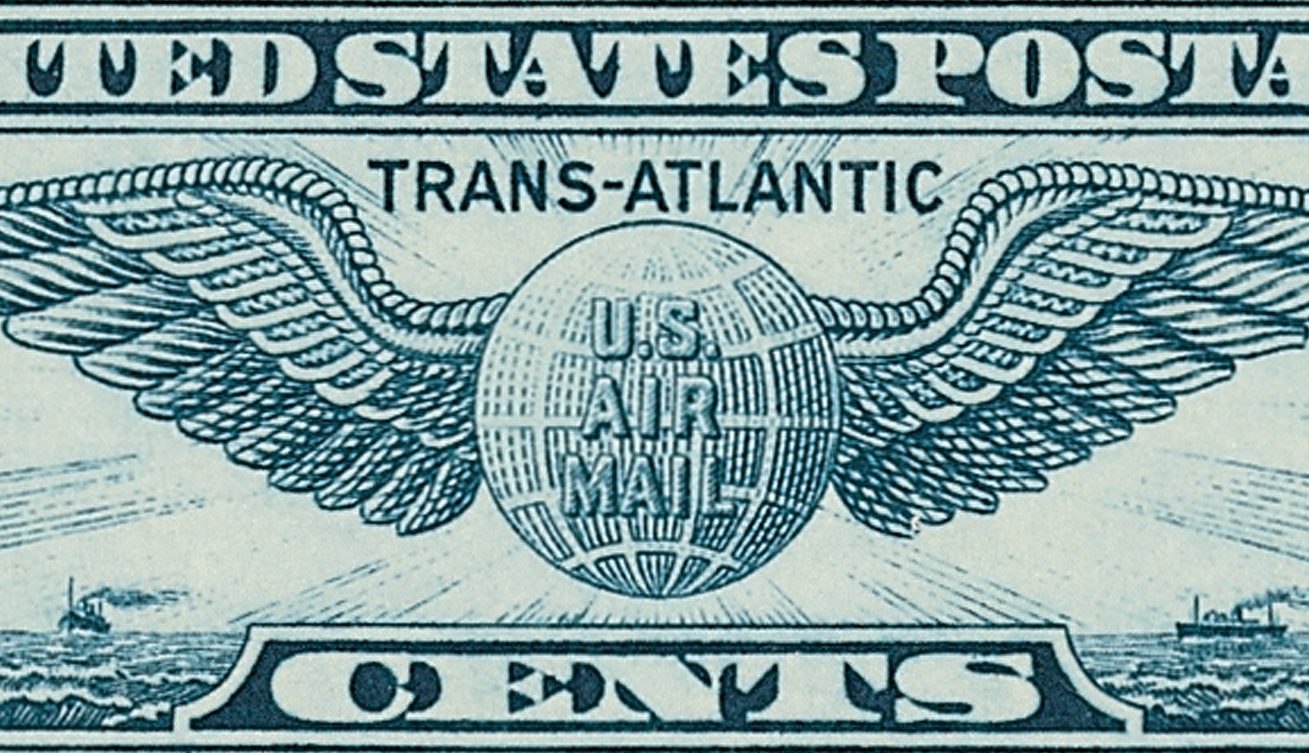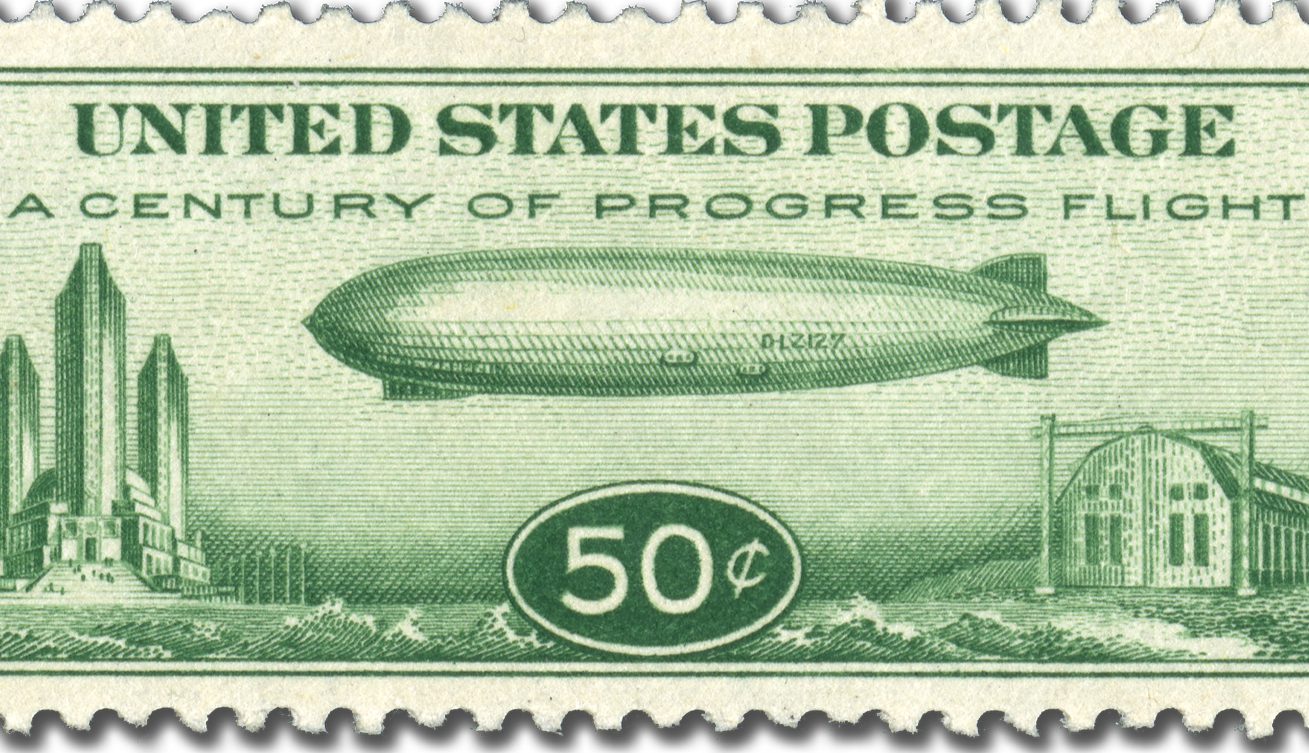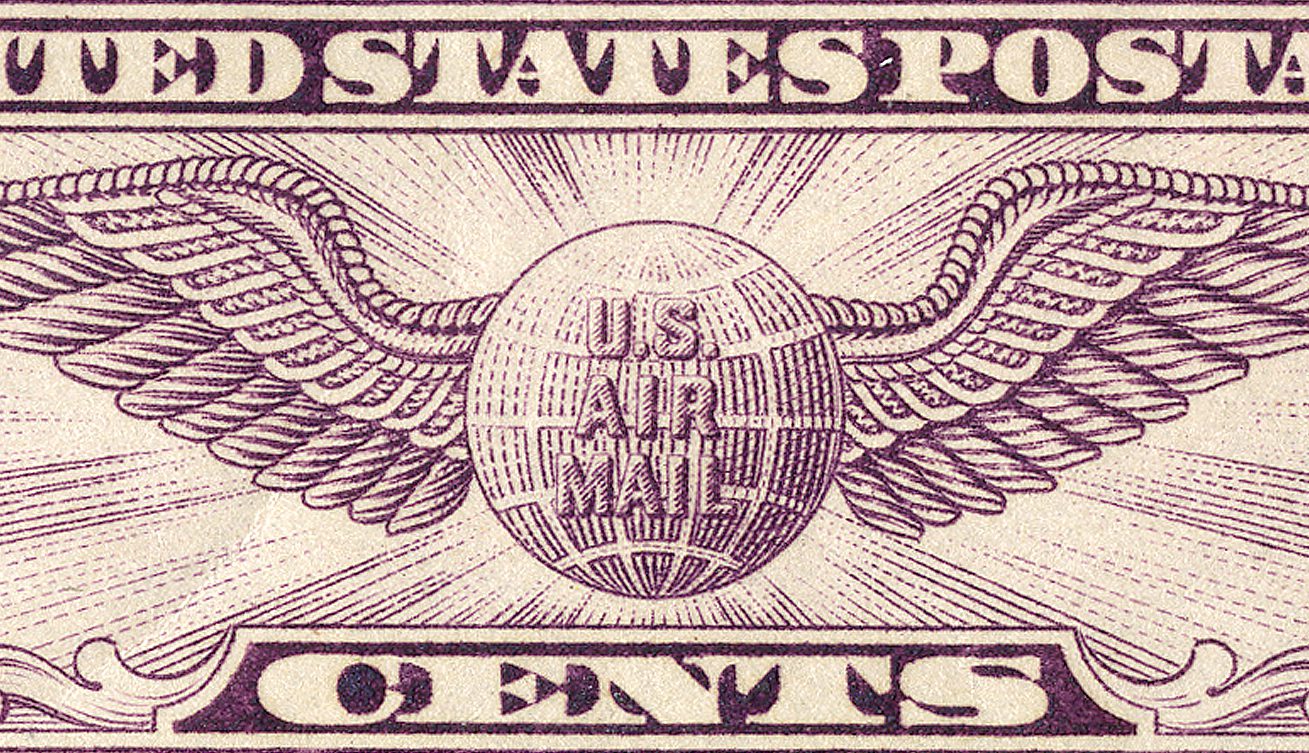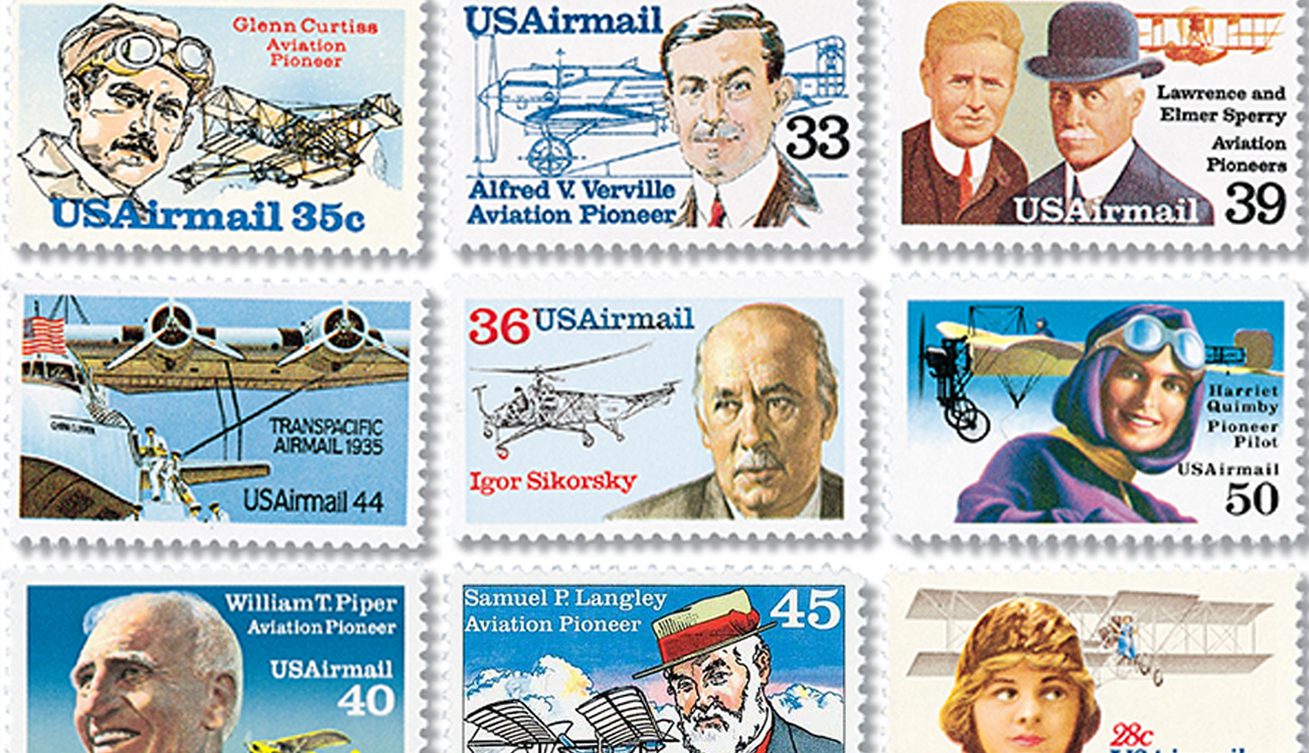Trans-Atlantic Airmail Service
On May 20, 1939, the US Post Office inaugurated its official trans-Atlantic airmail service to Europe. The new Yankee Clipper service flew from New York to France in 26 hours.
Happy Holidays! Enjoy a FREE 2026 Stamp Calendar With Purchases of $100 or More. While Supplies Last

On May 20, 1939, the US Post Office inaugurated its official trans-Atlantic airmail service to Europe. The new Yankee Clipper service flew from New York to France in 26 hours.

On May 13, 1918, the United States issued its first airmail stamp – US #C3. It carried America’s first airmail two days later, and sparked one of the world’s most famous stamp rarities.

On February 22, 1921, experimental overnight transcontinental airmail flights between San Francisco and New York were launched. Despite a rocky start, the flights were a resounding success, earning support and funding for expanded service.

On June 22, 1946, US Airmail was carried by jet for the first time. The flight was part of an event to showcase how GE’s aviation products could positively impact people’s lives and the future.

On April 16, 1912, Harriet Quimby became the first woman to fly across the English Channel. She had a brief, but significant aviation career, becoming a pioneer and inspiration for countless female flyers.

On January 9, 1793, Jean-Pierre Blanchard carried the first letter by hot air balloon in America. The letter came from President George Washington, an avid balloon enthusiast.

On October 2, 1933, the Century of Progress airmail stamp, affectionately known as “Baby Zepp” was issued. It sold poorly at the time and 90% of the stamps were destroyed, leaving a relatively small number available today.

On September 28, 1933, an investigation was launched into the awarding of contracts for airmail flights. The Airmail Fiasco, as it was also known, eventually led to wide-scale improvements to the airline industry and modernization of the Army Air Corps.

On September 23, 1978, the USPS issued the first stamps in its Pioneers of Aviation Series. The series would span more than 20 years and include 18 stamps honoring some of America’s most legendary aviators and their aircraft.